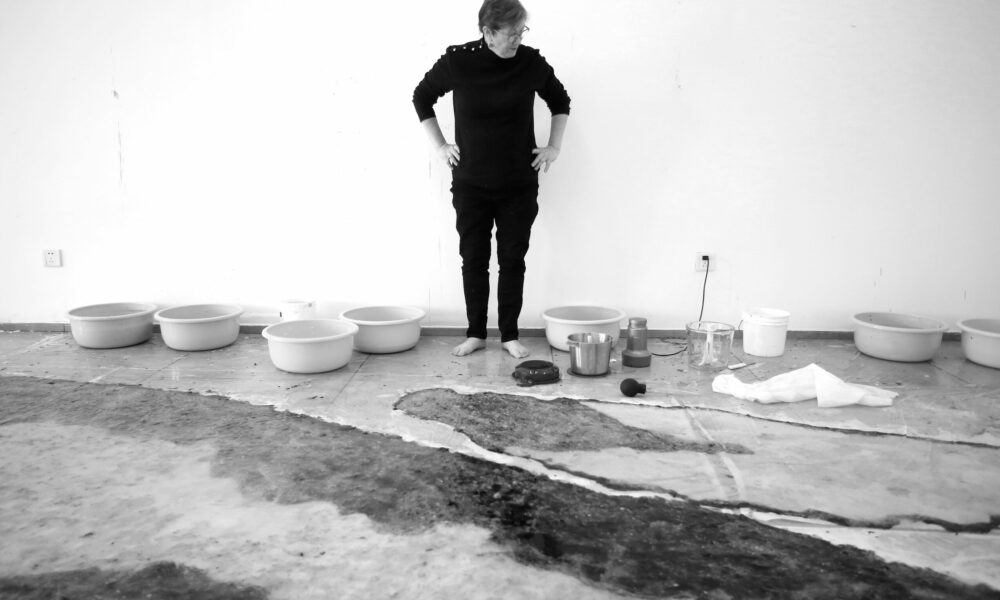

Today we’d like to introduce you to Sandra Hansen.
Hi Sandra, so excited to have you on the platform. So before we get into questions about your work life, maybe you can bring our readers up to speed on your story and how you got to where you are today.
I am an international, environmental papermaker. For eighteen years I had my own business performing one-woman plays on famous women in American history. When money for the arts in schools, museums, and libraries was cut in half three years in a row, I had to end my business. I decided to become a painter, like Vincent Van Gogh and Paul Gaugin, and travel the world and paint.
I traveled to India 13 times, Sweden, Italy, Australia, and many other places to paint and I went to many museums, and had occasional exhibitions. After an exhibition in India, my host said that he thought I was a better artist than what he saw in my exhibition. I decided that I had better go to art school. I earned my undergraduate and master’s degrees from Kendall College of Art Design with the Excellence in Painting and the Portfolio Prize. I again began traveling and making art.
After having a solo art exhibition at the Inner Mongolia Art Museum in Hohhot, China in 2017, I made some friends and contacts in China. I returned two other times before the quarantine ended my travels. The minute the quarantine was lifted in China, I started planning my next trip. With the help of Li Yang, an expert on rock color painting (a traditional Chinese fresco style of art) I was able to book two speaking engagements in Sichuan Province, China. The month of December was fraught with anxiety over gathering the documents for a new visa. After I was approved for the visa my passport was stolen, and I had to start over. I wasn’t able to get a new passport until two days before my flight. This meant that there was no time to get a Chinese visa.
My trip to China included a two-week stopover with my children and grandchildren in Hawaii and a visit to Japan, before the final destination of China. Upon arrival in Japan, I immediately went to the Chinese consulate and applied for a visa. While my husband and I waited to receive the visa, we did the tourist thing in Tokyo and Kyoto.
The other highlight of my Japanese stop was a three-day personal paper-making workshop at the Kubo Paper Mill, in Ogawa, Japan. I had one course of papermaking at Kendall College of Art and Design in 2015 during my senior year of my master’s program in Painting. I became so fascinated with papermaking that I stopped painting and became a papermaker full time. I took an online Japanese papermaking course during the pandemic. However, to become a master paper maker it takes 15 years and I needed more study.
During the three-day workshop in Japan, I worked with Mr Kubo honing my skills and learning more details about papermaking. My husband and I then returned to Tokyo where I picked up my Chinese visa two days before my flight to China and my husband returned home.
My stay in China is divided into three parts. During the month of February, most Chinese people take off the month from work, visit with friends and family, go sightseeing, have picnics, and go see the light shows.
My friend Li Yang invited me to stay at her house in Chengdu, China. She took me sightseeing every day, for two weeks straight. We saw the most fabulous light shows in parks and videos made out of lights on buildings. We then went to her studio in Zitong, at the Sichuan Culture and Arts College. I stayed thee for the next two weeks making paper. I could create handmade paper. I am so grateful for everything Li Yang did to make my stay in Sichuan amazing.
The art that I wanted to make in China was an installation on plastics in water. I needed a large studio to make some of the papers. I planned a giant handmade paper whale to hang from the ceiling for viewers to walk underneath. There would be long handmade papers that would hang horizontally and represent waves. Other papers would represent porpoises and fish. I plan to have large fishing nets with plastic bags in them hanging from the ceilings. Viewers would walk under the whale and feel like they were underwater.
My studio at home is too small to fully create this installation. Li Yang’s studio in Zitong and the residency studio that I rented in Beijing would give me the space to create some of the larger pieces that I needed. The race against the clock began as I attempted to make as much large art as possible before I had to return to the US. I had two weeks in Zitong and almost a month in Beijing.
In Zitong, I was able to make a twelve-foot whale and two, fifteen-foot wave-like papers. The whale, unfortunately, was accidentally damaged before I left for my studio in Beijing. Papermaking requires preparation. Paper is made from plant fiber that is cooked and beaten into a pulp. Rather than foraging for plant materials in China, or trying to bring plant fibers across international borders, I brought already prepared pulp with me.
I needed to rehydrate the pulp using a blender. I then dyed the pulp in various shades of blue, green, and purple. I forgot to bring some rubber gloves and soon had lovely blue hands for a week. Polyethylene chloride (PEO) is added to the pulp to make a smoother and stronger paper. The pulp was spread into thin sheets on interfacing that was on the floor. The interfacing helps to soak up the pulp’s water. The problem with PEO is that it is slime.
After the water soaked the interfacing, it spread itself across the floor making the floor extremely slippery. I had to lean over the 6 foot wide whale and stretch my five-foot frame as close as possible to the center of the whale and use a turkey baster to squirt the pulp to make the layers. Despite slipping numerous times, I never fell onto the art. When the pulp dried it became paper.
My new studio in Beijing was in the artist community Cao Chungdi. I was surrounded by art studios, galleries, and art openings. I met famous Chinese artists. My new studio was forty feet long and fifteen feet wide. It included a bedroom, bathroom, and a sitting area with a sofa and chairs and a table.
For the first two weeks in Beijing, I barely left my studio. I only came out to go to the restaurants for breakfast and to buy snacks for the rest of the day. I started on a new whale that was 38 feet long. The whale’s body was 8 feet wide plus the flippers which could make it up to 16 feet total. It took longer than I expected. I hoped to make more wave-like pieces, but it was taking all day to pour each layer of pulp across the whale, and I needed about 7 layers.
The whale was so wide that I could not reach the center well enough and that part of the whale became too thin. I turned the whale over and figured out ways to reach the center and add more pulp to where it was needed. This took even more time than before as I used a turkey baster instead of a cup to spread the pulp more precisely. I listened to Spotify while I worked long hours. While in Beijing, I was able to repair the first whale and all of the art was painted with methyl cellulose to make it stronger. Everything was left to dry for the last few days in Beijing. I visited with friends, went to openings, and sightseeing. My art was rolled onto a mailing tube. A mailing company picked it up and shipped it home for me.
I ate my favorite Chinese food, Peking Duck, for the last time with some friends. I vowed to return next year and stay for three months. I also plan to keep working on my Chinese throughout this year so that I might be able to carry on simple conversations. Li Yang will come visit in September to give a talk at the International Society for Experimental Artists (ISEA) annual Symposium in Grand Haven.
We all face challenges, but looking back would you describe it as a relatively smooth road?
In December I applied for a Chinese visa, which is a huge chore, a nine-page application, plus I had to bring a collection of numerous documents, invitation letters, my full itinerary of where I was staying, and airplane receipts. I planned a day trip to the Chinese consulate is in Chicago. The Chinese consulate claimed I needed another document, signed by Li Yang. Since it was nighttime in China I had to stay overnight in Chicago after all. I imposed on some dear friends who let me stay in their house.
In the morning Li Yang signed and emailed the document to me. The consulate however, decided that they didn’t need that document after all. My visa was approved. I was told to bring my passport back in 3 days to get my new visa put in it.
Back at home, my passport was stolen out of my car, which I accidentally left unlocked for four hours. Then my phone broke and couldn’t be repaired. It took me three days to get a new one. I now needed to apply for a new passport. The passport application was more arduous than the Chinese visa application. I could not get a new expedited passport until Jan 2nd, and I had to go to Chicago to get it. If I wasn’t anxious enough, I had two art exhibitions to take down and pack up, and I had to set up another exhibition on January 2nd. Before leaving for Chicago, I loaded up the car with my art for my husband to drop it off at the new exhibition. I rented a car to go to Chicago, My husband took the train to Chicago after dropping off the art.
After I got my new passport, there wasn’t time to get the Chinese visa. Our flight to Hawaii left on Jan. 4th. I arrived in Hawaii with both flu A and flu B as well as a full blown irritable bowel syndrome (ISB) flare-up. I spent the first week of my first trip to Hawaii sleeping on beaches or in a hammock watching the ocean, too weak to even walk across the cottage. My sons, daughter-in-lawl, grandchildren, and husband went to the volcano, the beaches, the restaurants, and everywhere else without me. Luckily, one son, my husband, and I had an extra week in Hawaii, and I got to see the volcano and go snorkeling for the first time.
When we got to Japan I immediately applied for my Chinese visa and had to wait two weeks to get it. I picked it up two days before my flight to China.
Another huge challenge when I got to China, was not having access to the internet. I had a new phone, but it could only accept eSIM cards, not physical ones. China doesn’t allow eSIM cards yet. This meant I had no cellular data so the translator wouldn’t work when I left the house. This meant I couldn’t get a taxi, or pay a restaurant bill unless they had WiFi. WiFi in Sichuan was very poor. Even with my VPN, I couldn’t look at Facebook, Instagram, Safari, Google, Yahoo, Dropbox, Amazon, eBay, and about a hundred other Western apps that are banned.
This meant that I couldn’t buy art materials, or talk to my friends except through email, I couldn’t do research online for the talks that I was going to give in Mianyang. Li Yang didn’t know what an ATM machine was so I had no cash for a while. My Visa card was rarely accepted anywhere outside of Beijing tourist areas. The financial problems were eventually fixed when I got the Alipay app on my phone and found an atm machine at a bank and taught Li Yang about it.
WeChat is the Chinese equivalent of Facebook. I could use the search function, which is sort of like Google, but it took me a while to discover the translate button so everything was in Chinese. Even when I could translate on WeChat, I could not find the articles I needed. For instance, if I wanted to know something about the paper pulp I was using and looked up hand papermaking I would only get industrial paper-making information.
Thanks – so what else should our readers know about your work and what you’re currently focused on?
Now that I am back home, I am focusing on the next steps for my installation. I have been learning some paper techniques for getting handmade paper to curl up from my mentor, Amy Richards. This has meant repairing some of my papermaking equipment and making and dying a lot of abaca pulp. I have also been looking for a large space that I could rent for a few months so that I can make more large papers for my installations. I am also looking for opportunities in China to give talks and to go on artist residencies.
This trip was my fourth trip to China and it was exceptional in many ways. I really loved living in an art community. The Chinese people are very kind and gracious people. Li Yang showed me wonderful sights in Chengdu.. I hope to return many more times.
Contact Info:
- Website: https://www.sandrahansen.com
- Instagram: @Sandra_hansen_eco_artist
- Facebook: https://facebook.com/profile.php?id=100087224884989
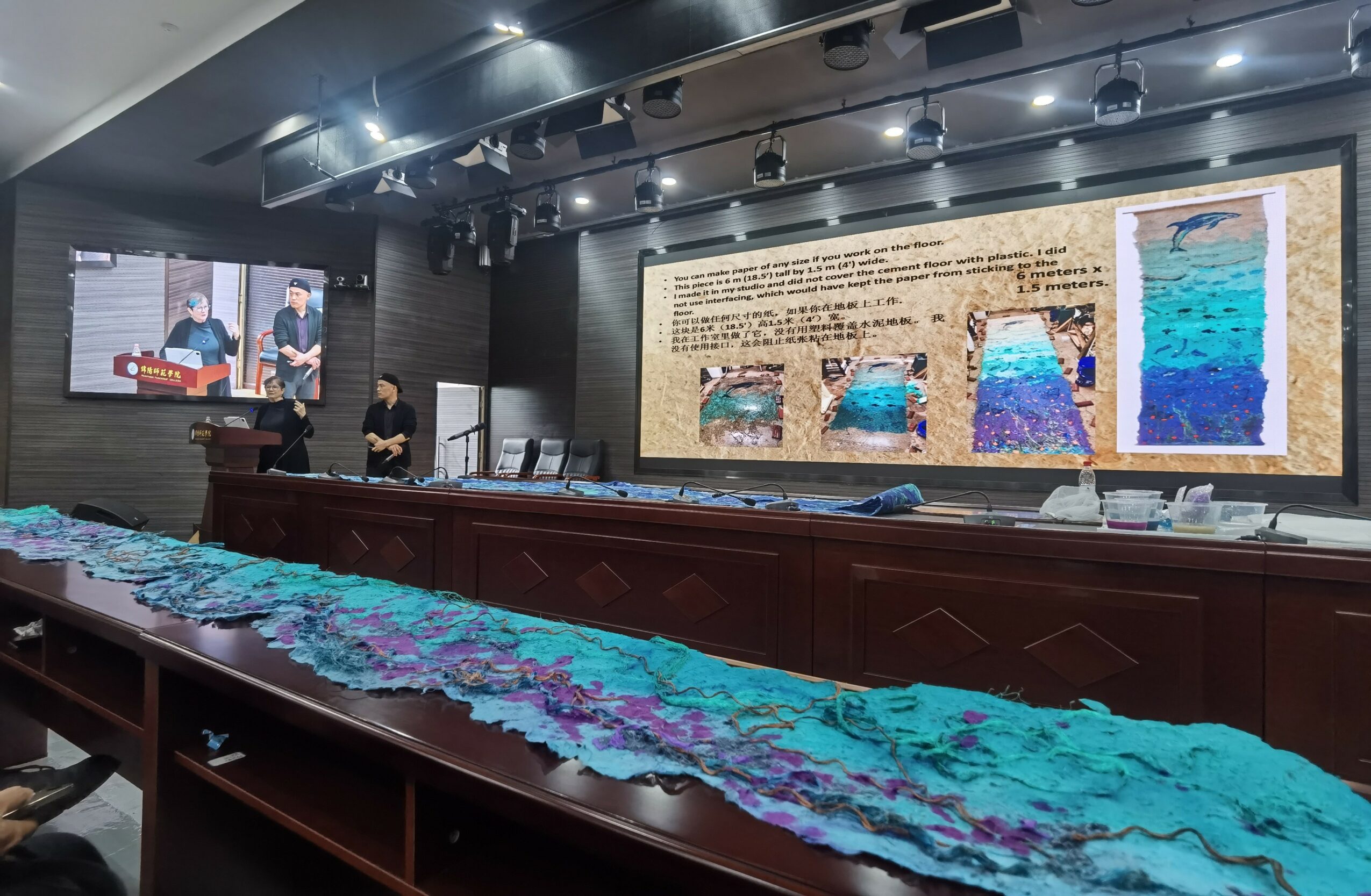
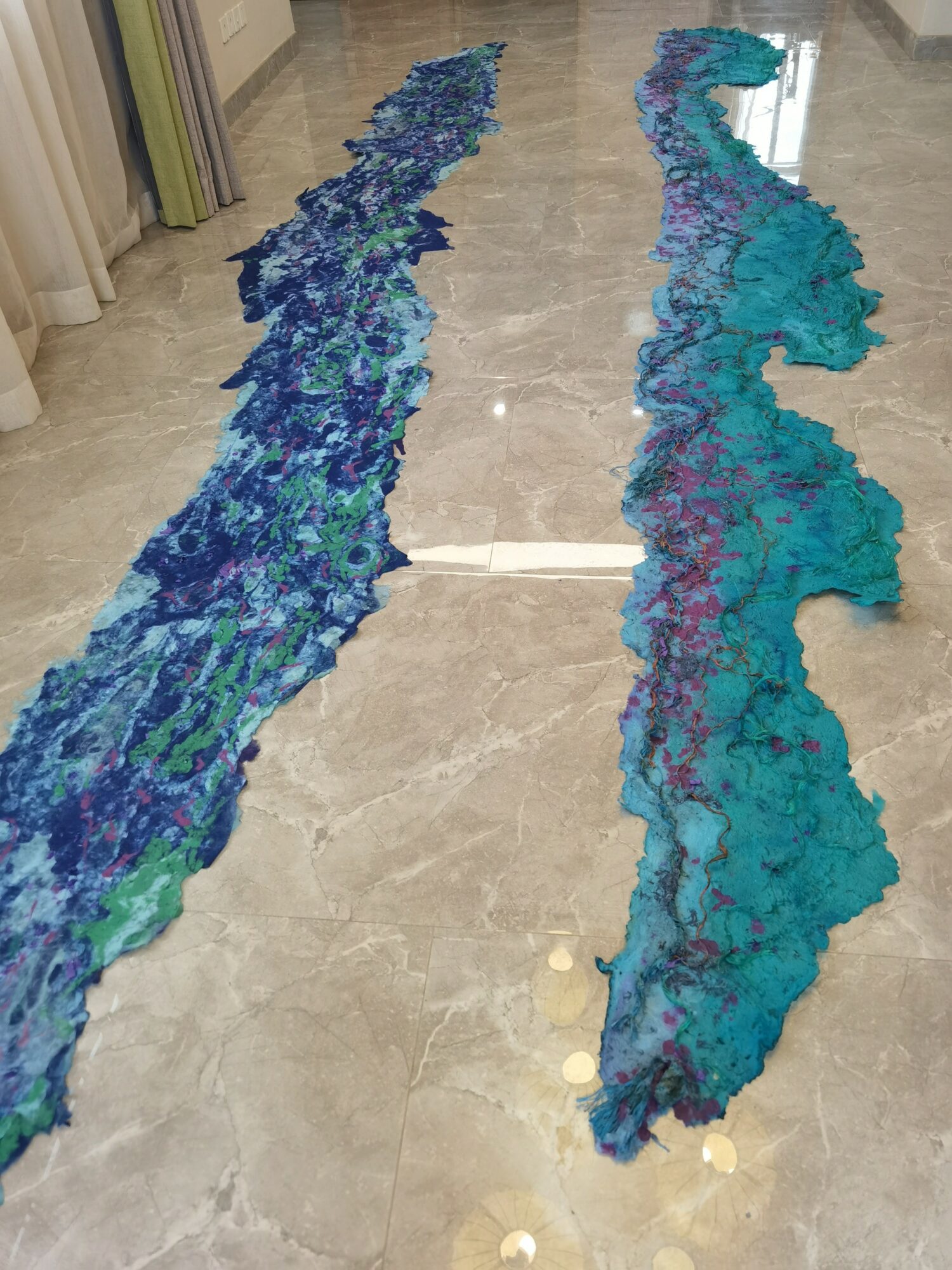
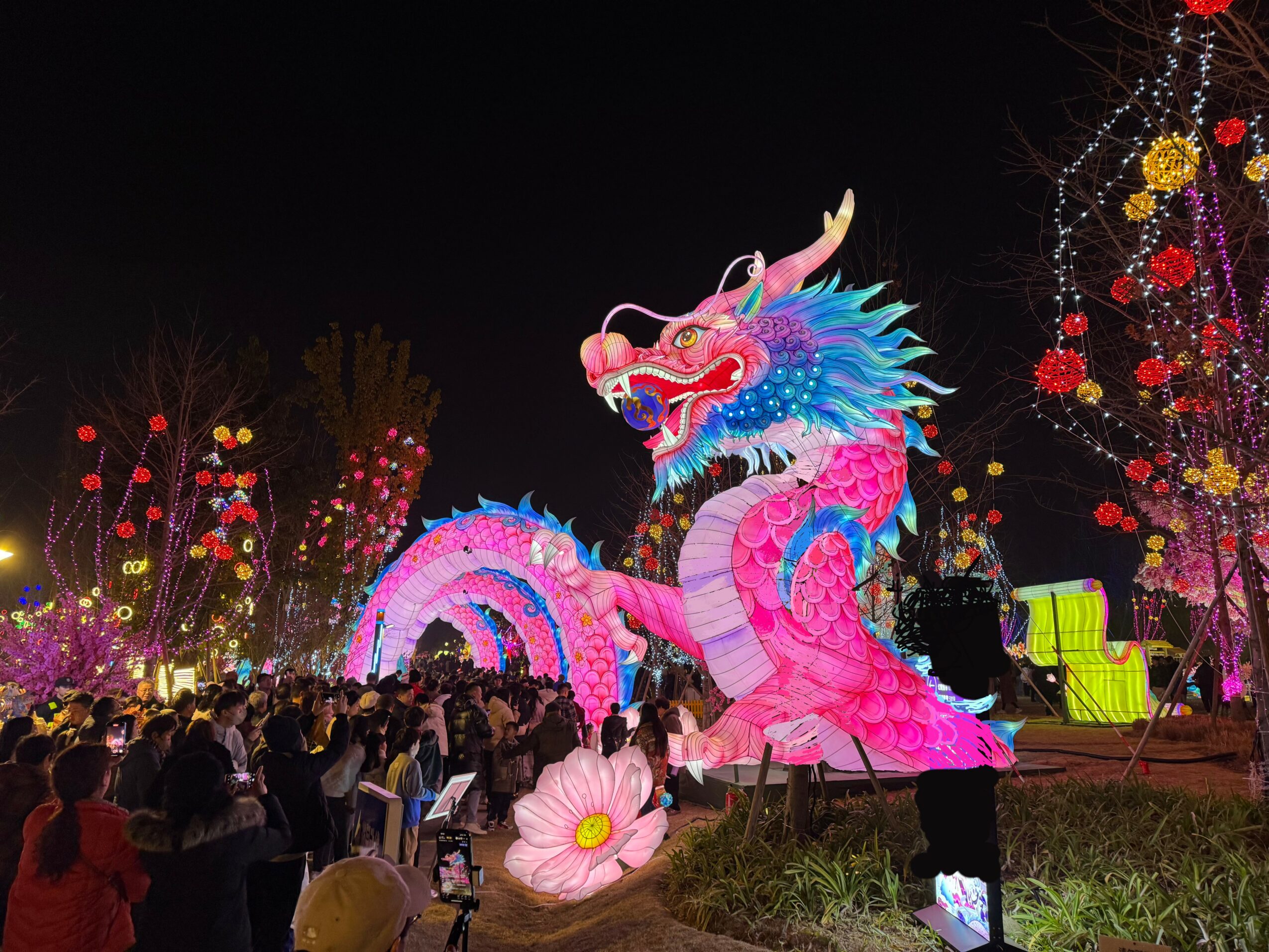

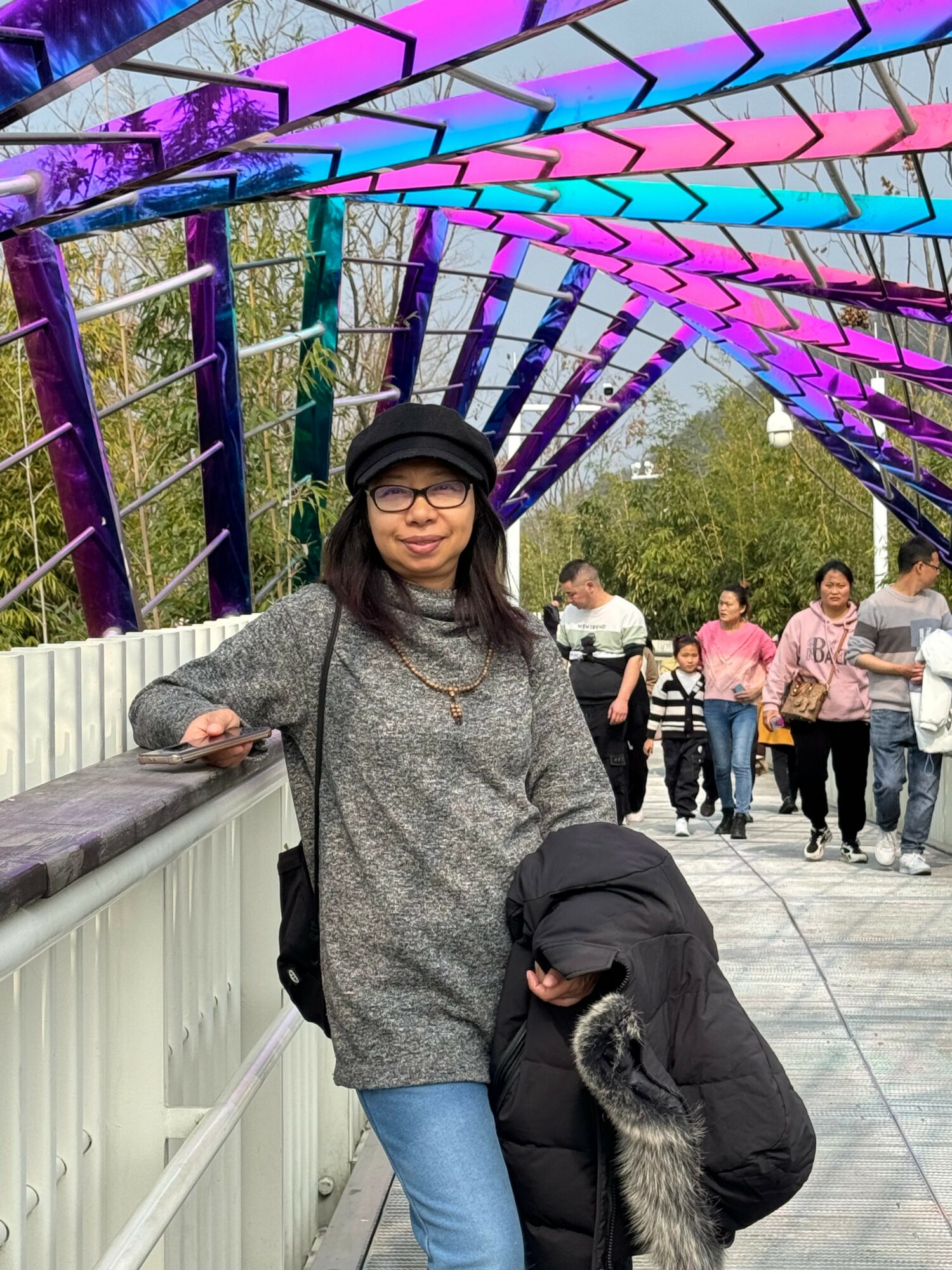
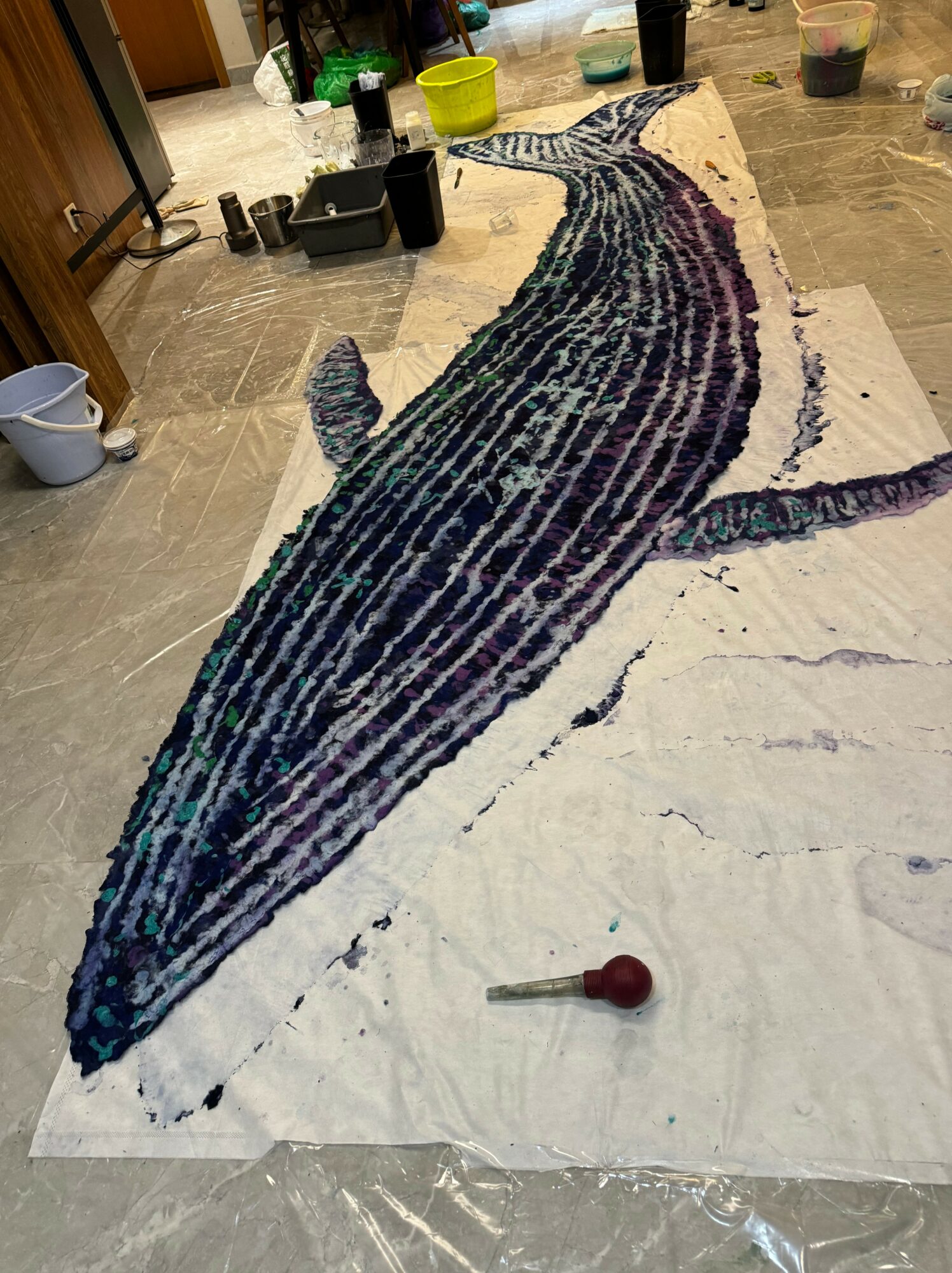
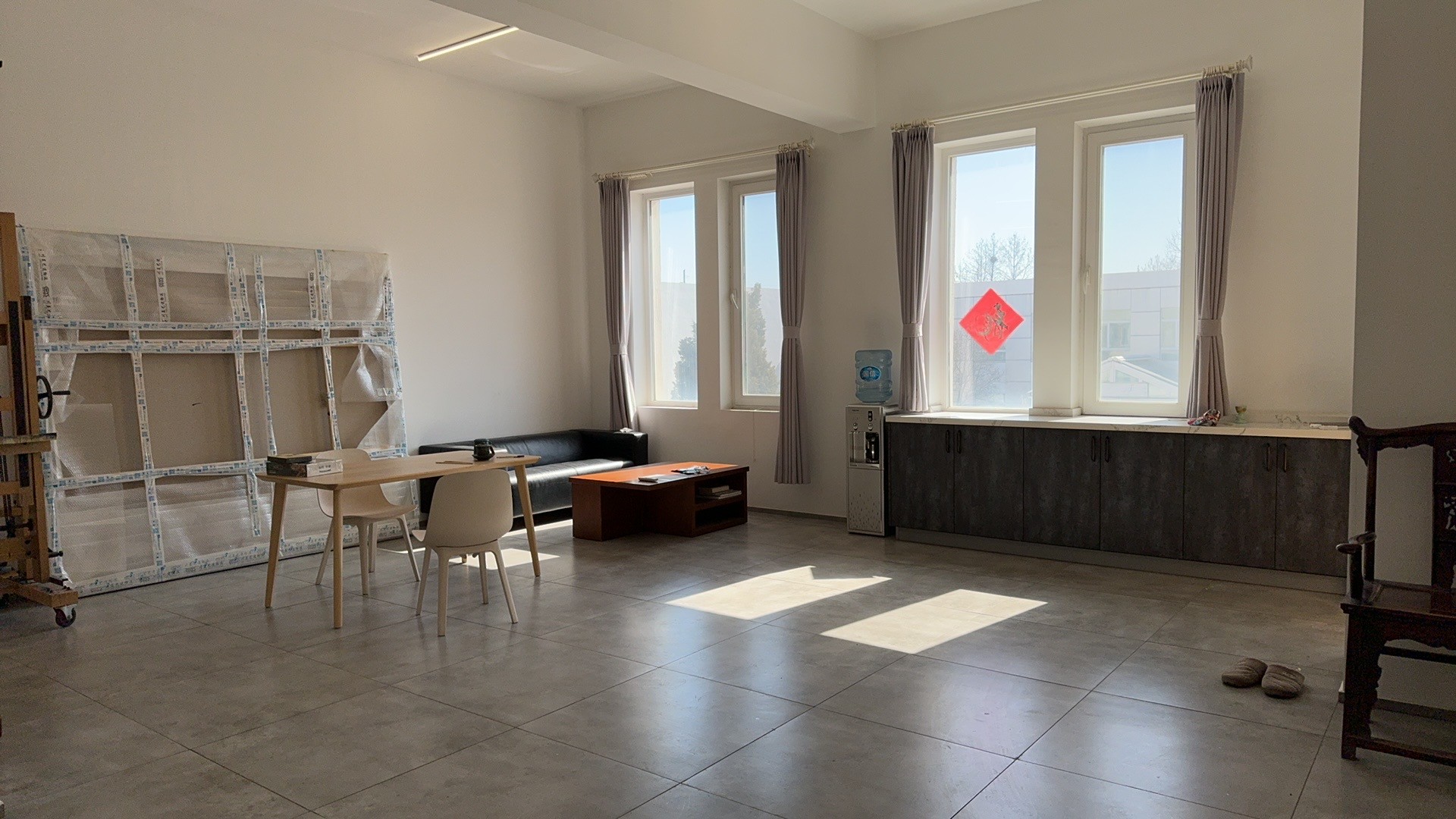
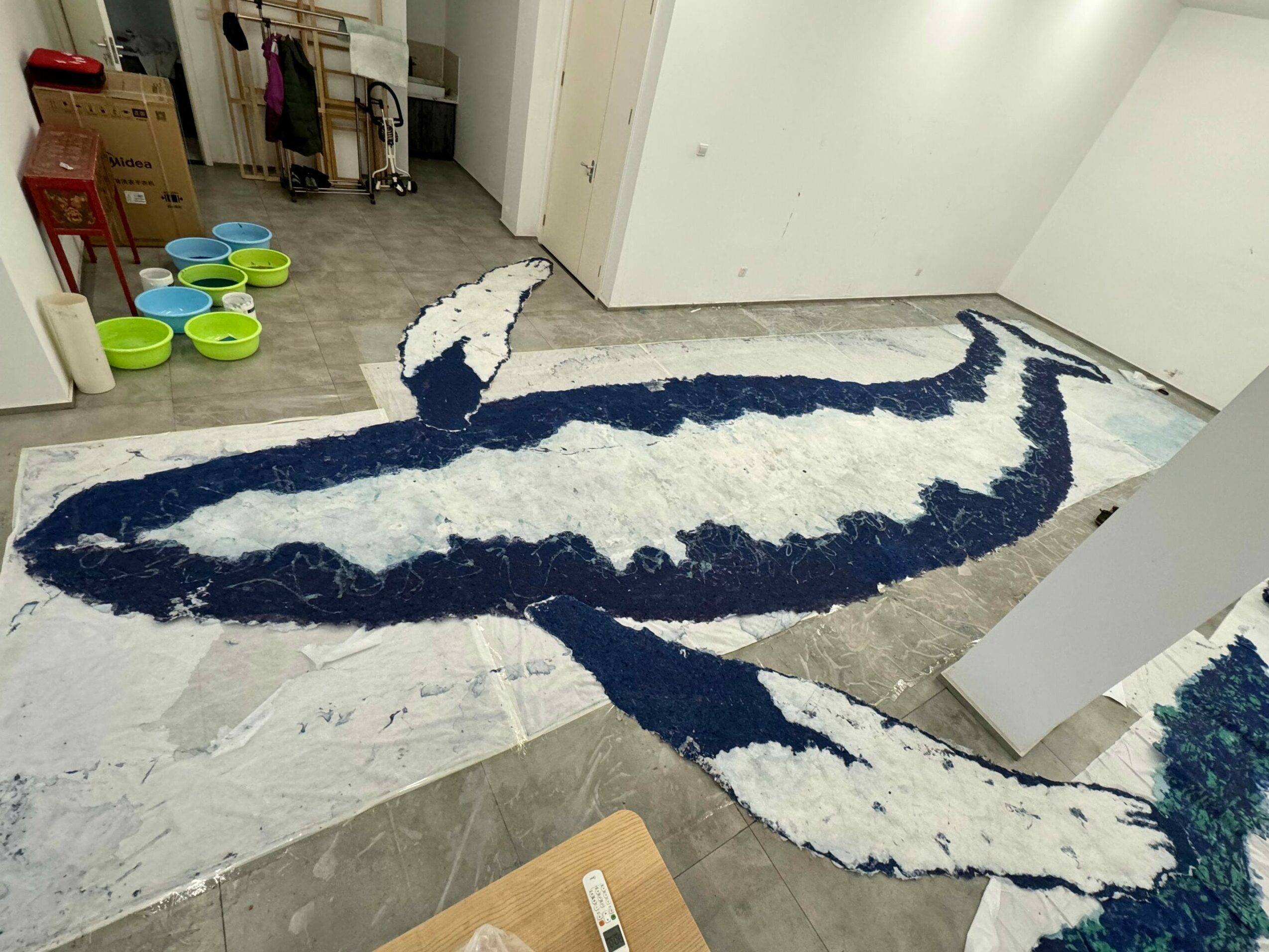 Image Credits
Image Credits
Gao Peng











